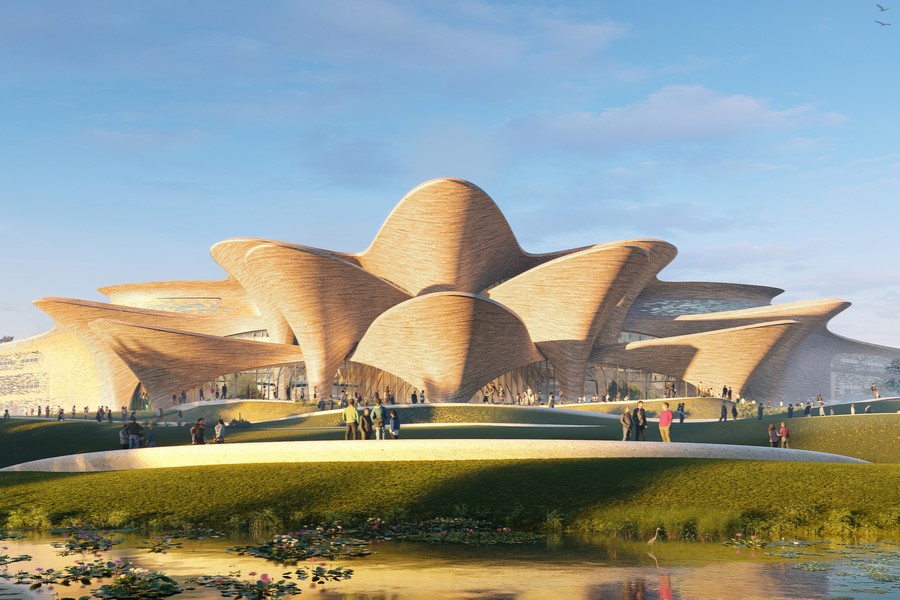
At the heart of Uzbekistan’s ambitious development agenda lies New Tashkent City — a transformative urban project designed to redefine the nation's capital and position it as a beacon of sustainable growth and innovation in Central Asia. Uzbekistan pavilion, offers the world a sneak peek into this extraordinary project.
Covering 25,000 hectares, New Tashkent City is being developed east of the current capital, nestled between the Chirchiq and Karasu rivers. Designed by UK-based Cross Works, the masterplan combines sustainable urbanism, smart infrastructure, and traditional Uzbek “mahalla” communities to create a harmonious city of 2.5 million future residents.
This isn’t just another megacity. New Tashkent City is conceived as one of Central Asia’s most sustainable urban environments.
Plans include:
• Planting 200,000 trees
• Constructing seven bridges for human-centered mobility
• Creating vast parks, green corridors, and energy-efficient housing
• Prioritizing public transport and walkable neighborhoods
The city will house:
• Presidential administration, government ministries, and diplomatic missions
• Universities and research hubs, making it an intellectual magnet
• Cultural institutions that blend tradition with innovation
The first phase focuses on District 1, spanning about 6,000 hectares, and is set to house 600,000 people. This district will encompass key governmental institutions, including the presidential administration and various ministries, alongside universities, research centers, and cultural facilities.
By intertwining modern urban planning with Uzbekistan's historical and cultural narratives, New Tashkent City stands as a testament to the nation's dedication to building a resilient, inclusive, and forward-thinking society. As showcased at Expo 2025, this project not only reflects Uzbekistan's developmental aspirations but also its role as a dynamic participant in shaping the future of urban living on the global stage .


